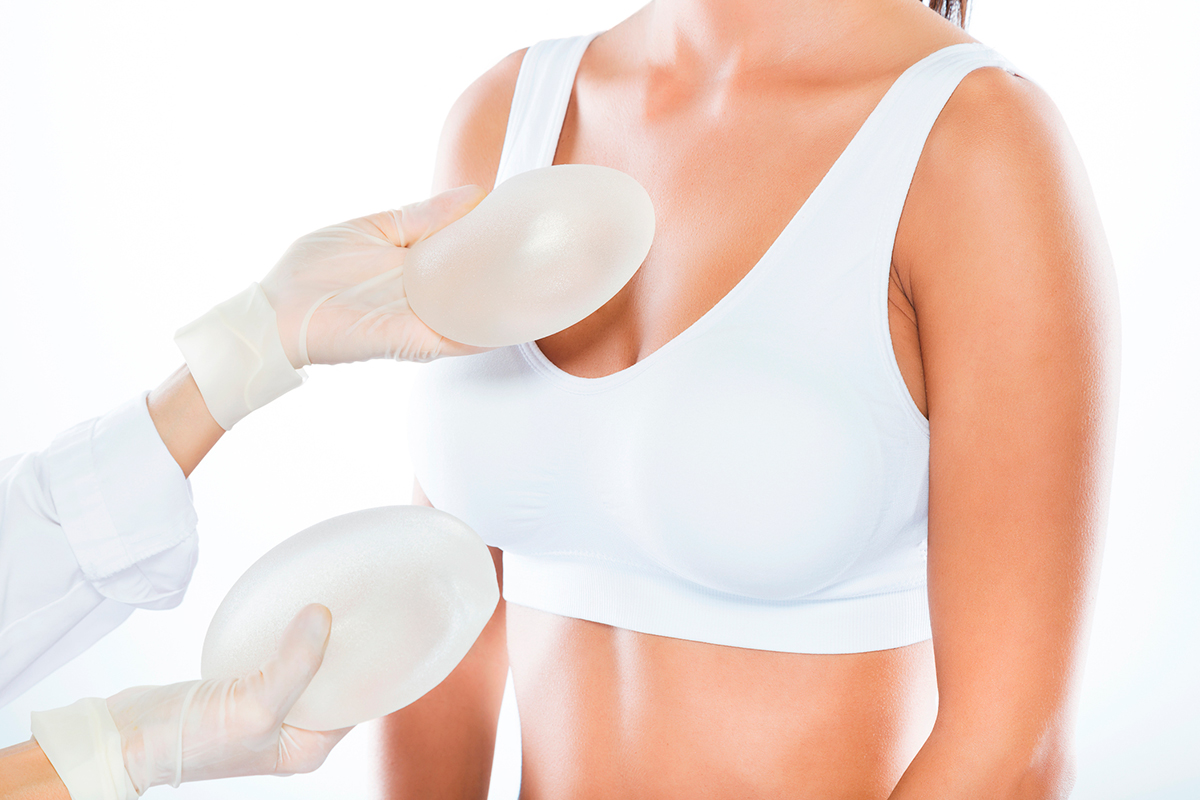
Breast Augmentation
A breast implant is a prosthesis used to change the size, shape, and contour of a person's breast. In reconstructive plastic surgery, breast implants can be placed to restore a natural looking breast mound for post–mastectomy breast reconstruction patients or to correct congenital defects and deformities of the chest wall. They are also used cosmetically to enhance or enlarge the appearance of the breast through breast augmentation surgery.
There are four general types of breast implants, defined by their filler material: saline solution, silicone gel, structured and composite filler. The saline implant has an elastomer silicone shell filled with sterile saline solution during surgery; the silicone implant has an elastomer silicone shell pre-filled with viscous siliconegel; structured implants use nested elastomer silicone shells and two saline filled lumen; and the alternative composition implants featured miscellaneous fillers, such as soy oil, polypropylene string, etc. Composite implants are typically not recommended for use anymore and, in fact, their use is banned in the United States and Europe due to associated health risks and complications.
In surgical practice, for the reconstruction of a breast, the tissue expander device is a temporary breast prosthesis used to form and establish an implant pocket for the future permanent breast implant. For the correction of male breast defects and deformities, the pectoral implant is the breast prosthesis used for the reconstruction and the aesthetic repair of a man's chest wall (see: gynecomastia and mastopexy).
Fat Filler
If you want to plump up sunken cheekbones, fill in stubborn facial lines, create more supple lips or enhance your breasts, you may want to consider fat injections.
Fat injections are a popular short-term solution to temporarily improve the appearance of hollow cheeks, thin lips, an aging forehead, eyes, and scars. They can also be used on a limited basis to enhance breasts in a process called breast augmentation fat transfer. There is no need for concern about a foreign substance in your body since the fat used in the injection is taken directly from another area of your body.
The Procedure
The procedure is performed in the doctor’s office under local anesthesia. Patients may experience minimal discomfort from the needle injection. Depending on the extent of treatment, the procedure can take from 30 to 90 minutes. Patients return home shortly after the procedure is finished.
First, an antiseptic is applied to two areas: the location of the fat to be removed from your body, and the target areas that will receive the fat injection.
Fat cells are then removed from the buttocks, stomach, or thighs with a syringe or cannula (a thin hollow tube) that is connected to a vacuum device.
After the fat cells are suctioned, they are processed and purified by the doctor. During the so-called stem cell face lift, stem cells in the fat cells are processed using a special device or “activated” via drugs, chemicals or lasers. The fat is then injected beneath the skin into the target area. A bandage may be applied at this time.
Results are fully evident within one week. Fat fillers never result in 100 percent improvement of wrinkles, scars, hollow cheeks, or thinned lips; nor are the results permanent. Results can last as little as a few weeks or as long as one year.
Transplanted fat cells will die without blood supply within three to four days at body temperature. It takes three to four days until the first capillaries are reaching the injected fat cells. Therefore, the “take” of fat cells is always a gamble; some survive forever, while most of them don’t take and are reabsorbed in the body.
Recovery
After the procedure, patients may experience rather strong swelling and some bruising. The swelling may last for several weeks or months. The treated area may appear reddish in color within the first 48 hours. Scabs may form as well. Most often, normal activities can be resumed immediately. Patients are advised to stay out of the sun. Unmanageable pain or symptoms that are progressive or abnormal should be reported to the doctor immediately.
Silicone Implant
Silicone is a polymer that has a wide range of uses in personal care products and surgical implants. It can be found in liquid, gel, or rubber-like solid forms. Learn about its advantages and its use in breast implants.
Advantages of Silicone
Silicone is made of silicon, oxygen, and other elements, usually carbon and hydrogen. Silicone has many advantages, including:
- Stable at high temperature
- Resistant to aging
- Resistant to sunlight
- Resistant to moisture
- Resistant to extremes in temperature
Uses of Silicone
Silicone appears in approximately half of all makeup, hair, skin, and underarm products. The gel form of silicone is used in bandages and dressings and breast, testicle, and pectoral implants.
Silicone is widely used during ophthalmic procedures. It has been used to replace vitreous fluid after a vitrectomy, serve as intraocular lenses during a cataract procedure, as punctal plugs for dry eye surgery, and in treatment for retinal detachment.
Silicone Breast Implants
The most well-known use of silicone is as breast implants for breast surgery. Breast implants are medical devices implanted under the breast tissue or muscle of the chest to either increase breast size or help reconstruct the breast. Breast implants are either saline-filled or silicone gel-filled. Both types of implants have a silicone outer shell.
For patients with silicone gel-filled breast implants, it is recommended that they obtain an MRI screening for silent rupture three years after implantation and every two years afterward. A silent rupture is the leakage of silicone from the implant into the tissue that forms around the implant. A ruptured silicone breast implant can cause breast pain or changes in the shape of the breast.

